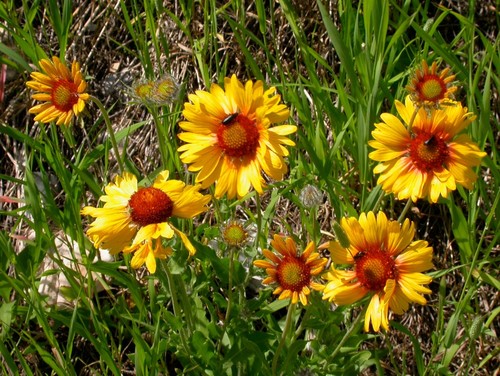Although they are generally beneficial for our environment in many and various ways, these little critters can spoil your dinner and your mood if they are stinging, biting or even eating your food. They are a nuisance for your house and garden.

Photo by – More landscaping ideas
The warmer months of the year provide multiple opportunities for home outdoor activities or just enjoying a great time spent in the backyard of your house as a family.
Unfortunately, flies, beetles, bees, gnats, termites, mosquitoes, moths, butterflies, and many other annoying bugs can be seen in a large number in the hot season.
If you are concerned about the presence of these insects in your home backyard you can take several steps that can help you to manage sharing your outdoor spaces with the insect world.
Prevention
Different species of insects start their lives as eggs then as larvae or nymphs. Usually, the insect eggs are deposited in damp areas or even in water.
Maybe there are not more nasty and annoying insects than mosquitoes. Their larvae thrive in any stagnant water before they turn into winged, buzzing and biting insects.
The solution is simple and easy to apply. You should only to ensure a proper drainage and to keep your home outdoor areas free of standing water. These are two simple ways to reduce the population of mosquitoes and other certain bugs in your yard. Moreover, animals (such as bats and many birds) can feed on these insects keeping the number of these insects down.
Flies are another problem for any household and especially any home. They have an impressive breeding rate, laying between 50-100 eggs at one time. These eggs hatch into nymphs in just 12. The optimal solution is to keep your outdoor (front and backyard) and home free from any kind of decaying matter. In this way you can limit the fly number in your backyard.
Traps
There are many and various traps on the market that you can use outdoor, each of them designed for a specific insect. Generally, they use an attractant, such as a light or scent that lure these nasty insects to the trap. They fall inside of the traps and cannot get out.
Although there are a lot of chemical-based traps (bug “zappers”), there are also many kinds of natural traps that you can use outdoor. So, setting your traps outdoor away from living spaces and patios will attract the insects to the traps keeping them away from you. Once your trap is full, you can bury it in your garden to naturally decompose.
It is a good idea to set your traps as early as possible in the season. In this way you can trap a lot of emerging insects. Perhaps you can have the chance to trap the queens of certain insects, like wasps or bees, thus reducing considerably the bug population.
Screen
If you like to spend many hours outdoor, especially evenings, then buying a screen for your home is a wise option. In this way you can enjoy the nice weather keeping the insects outside of your home. In fact, in three-season living areas where swimming is possible, many homeowners have installed a protective screen around the pool.
Beneficial Bugs
Many insects like bees, lady bugs and butterflies and bees the unsung landscape heroes, as they are responsible for protection and pollinating of many plants and flowers. They are indeed beneficial for your home garden.
In addition, bumblebees and honeybees and bumblebees are enjoyable to watch as they fly and buzz from flower to flower.
Hygiene Requirements for a Comfortable Home | How To Build A House (howtobuildahouseblog.com)


